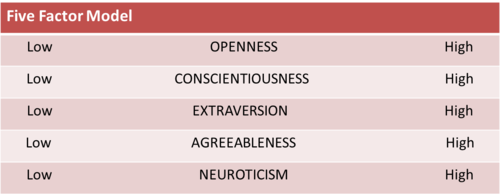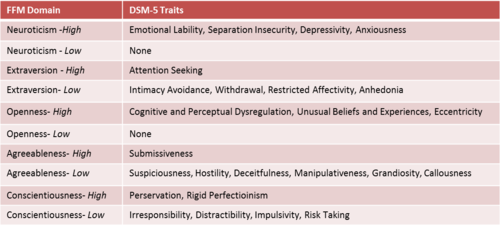ADA and Restrictions on Medical Examinations
When Congress enacted the ADA in 1990, it found that people with disabilities have been “subjected to a history of purposeful unequal treatment” in many areas including employment.
The ADA strictly prohibits certain inquiries and examinations. Title I of the ADA bars employers from questioning about the existence, nature or severity of a disability and prohibits medical examinations until after a conditional offer of employment has been made. Courts have held that medical examinations include psychological tests.
EEOC Enforcement Guidance
EEOC enforcement guidance provides a seven-factor test for analyzing whether a test or procedure qualifies as a “medical examination,” including:
- whether the test is designed to reveal an impairment of physical or mental health such as those listed in the Diagnostic and Statistical Manual of Mental Disorders (“DSM”); and
- whether the test is interpreted by a health care professional.
According to the guidance, the presence of any one of the seven factors is enough to support a finding that the test is a medical examination.
The Assessment and the Five-Factor Model
A key component of the Assessment process is a computer-administered personality test based on the five factor model (FFM), a coordinate system that maps which personality traits go together in people's descriptions or ratings of one another. The FFM is empirically-based, and its five factors were discovered through a statistical procedure called factor analysis.

As illustrated in the diagram to the right, the FFM describes personality in terms of five broad factors:
- Openness: inventive and curious vs. consistent and cautious.
- Conscientiousness: efficient and organized vs. easy-going and careless.
- Extraversion: outgoing and energetic vs. solitary and reserved.
- Agreeableness: friendly and compassionate vs. cold and unkind
- Neuroticism:sensitive and nervous vs. secure and confident
Dimensional vs. Categorical Taxonomy
The FFM is a "dimensional" taxonomy consisting of a profile of a diagnosis in terms of a few relevant and empirically-validated traits (e.g., the five factors). The model is based on the idea that a mental disorder itself is not a categorical construct but rather a unique and meaningful constellation of traits.

Previous versions of the DSM, like the DSM-IV-TR, were based on the "categorical" model. The categorical model is based on a model of diagnosis in which a patient’s symptoms add up to a diagnosis which subsequently leads to a treatment that addresses the disorder. Research and practice have found that psychological disorders do not lend themselves well to the categorical model due to their eclectic and variable nature.
FFM and DSM
The shortcomings of the categorical model led the APA to adopt the FFM in the DSM-5 for purposes of diagnosing personality disorders. The adoption of the FFM in the DSM-5 follows approximately two decades of research demonstrating that the FFM can be used as a structural model for describing and understanding personality disorders, including those within the DSM.
In her seminal review of the personality disorder literature published in 2007, Dr. Lee Anna Clark, one of eleven members of the working group on personality disorders for DSM-5, stated that “the five-factor model of personality is widely accepted as representing the higher-order structure of both normal and abnormal personality traits.”
A study entitled, "The Convergent Structure of DSM-5 Personality Trait Facets and Five-Factor Model Trait Domains," published in September 2012 and co-authored by another member of the DSM-5 personality disorder working group, states:
- "[T]his study builds on a growing body of research indicating correspondence between the DSM-5 personality trait model and the FFM [citations omitted] by showing that common higher-order dimensions can be identified in a conjoint analysis of FFM and DSM-5 traits."
- "[T]he structure of maladaptive traits proposed for DSM-5 bears clear resemblance to the structure of normal personality as represented by the [FFM]."
- "The … FFM is capable of linking normal personality traits with disordered personality features."
A December 2012 article entitled “The Five-Factor Model of Personality Disorder and DSM-5” states that “studies have consistently demonstrated significant relations between the traits included in the FFM and the DSM [personality disorder] constructs. The article also sets out the following table showing the correlation between FFM domain factors and DSM-5 traits:

The Assessment is Designed to Reveal An Impairment
As noted, EEOC guidance provides that tests or assessments are medical examinations if they provide evidence that would lead to identifying a mental disorder or impairment, such as those listed in the DSM.
The majority of personality disorders, including those listed in the DSM, are characterized by significant positive relations with Neuroticism and significant negative relations with Extraversion, Agreeableness and Conscientiousness. Consequently, applicants who take the Assessment and have low scores on Openness, Conscientiousness, Extraversion and Agreeableness and high scores on Neuroticism, will be categorized as red.

Employers and assessment providers have tried to argue that their assessments are designed to measure “normal” personalities and/or “stable” personality traits. That argument fails because, as a dimensional model, the FFM determines each applicant’s position along the axis of each of the five traits. Those five traits are the common measuring rod for all persons, including persons with mental disabilities. By its design and structure, an Assessment based on the FFM cannot measure only so-called “normal” personalities.
While the intent of the Assessment design may not have been to reveal a mental impairment, courts have held that the intent is irrelevant. What is relevant is that the use of the FFM as the basis of the Assessment means that the Assessment was designed to reveal mental impairments by identifying and rejecting those applicants who do not fall within the “green” parameters of the five traits.
No comments:
Post a Comment
Because I value your thoughtful opinions, I encourage you to add a comment to this discussion. Don't be offended if I edit your comments for clarity or to keep out questionable matters, however, and I may even delete off-topic comments.